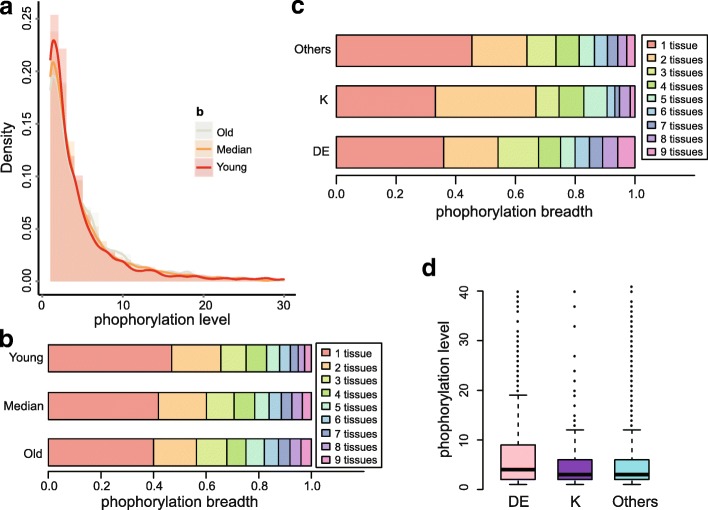Fig. 4.
Phosphorylation level and breadth in mouse. (a) The distribution of maximum level for phosphosites in the three age groups. The phosphorylation level was lower in the young group than the old group (p-value = 1.87e-10, Wilcox rank sum test). (b) The phosphorylation breadth in the three age groups. Higher proportion of phosposites in the young group expressed in fewer tissues compared with the old group (p-value = 7.52e-12, Wilcox rank sum test). (c) The phosphorylation breadth of phosphopsites evolving from different amino acids. Larger part of phosphosites evolving from DE expressed in more tissues than other kind of phosphosites. (d) The maximum phosphorylation level for phosphosites originating from different amino acids. There were more phopshosites originating from DE with high phosphrylation level than other kinds of phosphosites

